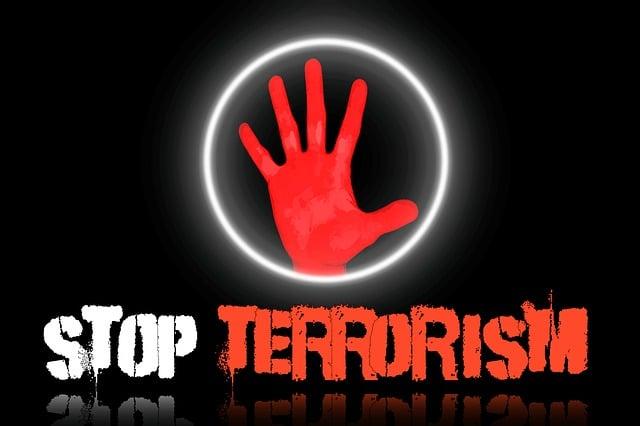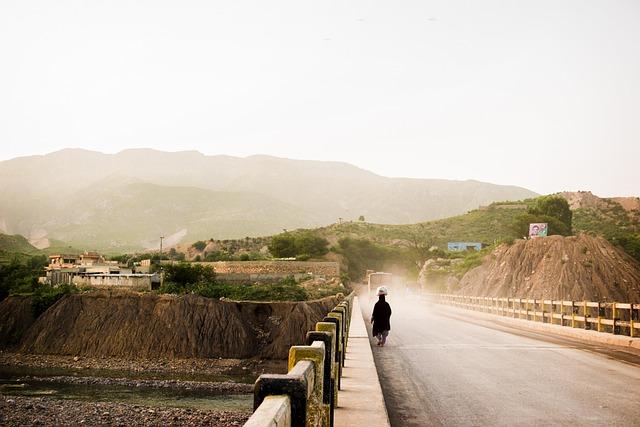In the heart of South Asia lies Pakistan, a nation characterized by stunning landscapes and rich cultural heritage, yet marred by a kaleidoscope of violence that has become deeply woven into its societal fabric. From the tumultuous aftermath of partition to the contemporary struggles against extremism and sectarianism, the narrative of violence in Pakistan is as multifaceted as the country itself. This article seeks to unravel the complex tapestry of violence that permeates various dimensions of Pakistani life—economic, political, and social—seeking to understand not just the causes but also the consequences of such turmoil. In doing so, we aim to illuminate the underlying forces that shape the everyday experiences of millions, offering a balanced exploration of a topic often clouded by polarizing views. Through this lens, we hope to foster a deeper understanding of the challenges Pakistan faces and the resilience that continues to emerge amidst adversity.
The Historical Roots of Violence in Pakistan
The origins of violence in Pakistan are deeply woven into the fabric of its history, marked by a series of events that shaped societal norms and conflicts. From its inception in 1947, the country has grappled with political instability, ethnic tensions, and a legacy of colonialism. The partition of India created not just a new nation but also a violent upheaval, displacing millions and resulting in communal riots that left indelible scars. This tumultuous start set a precedent for violence as a means of resolving disputes, with various groups asserting their rights and grievances through force rather than dialogue.
Over the decades, a myriad of factors have contributed to the cycle of violence, including socio-economic disparities and geopolitical dynamics. Religious extremism, fueled by foreign interventions and domestic policies, has exacerbated tensions both within and outside Pakistan. Furthermore, regional disputes, such as those in Kashmir, have instigated conflict, pitting state against state and fuelling insurgent movements. In exploring these facets, several key issues emerge:
- Ethnic Conflicts: Rivalries among groups like Punjabis, Sindhis, Pashtuns, and Baloch propagate violence through claims for autonomy and resource sharing.
- Political Corruption: Failed governance has eroded trust in institutions, leading to vigilantism and mob justice as alternatives to state protection.
- Militancy: The rise of various militant groups, often financed by foreign entities, has transformed regional disputes into international battlegrounds.
| Year | Event | Impact |
|---|---|---|
| 1947 | Partition of India | Mass displacement; communal violence |
| 1971 | Bangladesh Liberation War | Military crackdowns; independence of Bangladesh |
| 2001 | Post 9/11 Global War on Terror | Escalation of militancy; extremism |

Understanding the Socio-Economic Factors at Play
The complex web of violence in Pakistan cannot be understood without delving into the socio-economic landscape that frames individual and collective behaviors. A multitude of factors contribute to the precarious situation, including poverty, unemployment, and educational disparities. Poverty serves as a breeding ground for desperation, fueling unrest and violence as individuals struggle for survival. Unemployment exacerbates these circumstances, creating a sense of hopelessness and prompting people to look for alternative means to achieve their needs and desires. Meanwhile, educational inequality limits opportunities for many, leaving younger generations vulnerable to extremist ideologies that promise a sense of purpose and belonging.
Additionally, socio-political dynamics play a significant role in perpetuating violence. The influence of corruption within both government and law enforcement institutions undermines trust in the authorities, leading to a cycle of retribution and conflict. The existence of ethnic and sectarian divides further complicates the landscape, often intensifying social tensions and resulting in targeted violence. Moreover, access to resources—whether land, water, or security—often falls along lines of privilege, disadvantaging marginalized groups and fostering resentment. The interplay of these factors highlights the urgent need for comprehensive socio-economic reforms aimed at addressing underlying grievances and reducing the propensity for violence across the nation.

Exploring the Role of Extremism and Militancy
The landscape of extremism and militancy in Pakistan is a multifaceted phenomenon shaped by various sociopolitical and historical factors. Rooted in deep-seated grievances and a complex web of ideologies, the rise of extremist factions has often been a reaction to perceived injustices and the struggle for identity. Young individuals, seeking purpose or community, are particularly susceptible to the allure of militant ideologies. These groups often exploit economic disparities and political disenfranchisement, leading to a cycle of violence that is difficult to break. The impact of these movements extends beyond immediate security concerns, affecting local communities, international relations, and Pakistan’s economic vitality.
Efforts to combat extremism require a comprehensive understanding of its origins. Key elements include:
- Socioeconomic Factors: Poverty and lack of education create fertile ground for recruitment.
- Political Disenfranchisement: Alienation from political processes can drive individuals towards radical solutions.
- Religious Interpretations: Misinterpretation of religious texts can legitimize violence for some factions.
To effectively address these challenges, a collaborative approach involving government, community leaders, and international partners is essential. Strategies that focus on education, economic development, and peacebuilding initiatives have shown promise in restoring stability. The following table illustrates some prominent extremist groups and their impact:
| Group | Founded | Primary Motivation | Notable Incidents |
|---|---|---|---|
| Taliban | 1994 | Islamic Governance | Various attacks, including the Army Public School attack in 2014 |
| Lashkar-e-Taiba | 1990 | Kashmir Dispute | 2008 Mumbai attacks |
| Baloch Militant Groups | Early 2000s | Autonomy and Rights | Attacks against security forces in Balochistan |

Crafting Comprehensive Strategies for Peace and Stability
Addressing the multifaceted nature of violence in Pakistan requires an intricate interplay of understanding, dialogue, and sustained action. To build a foundation for peace, stakeholders must first identify the root causes of violence, which often stem from a mixture of political instability, socio-economic disparity, and historical grievances. Key strategies can include:
- Community Engagement: Involving local populations in dialogue to promote mutual understanding and collective problem-solving.
- Economic Development: Investing in educational programs and job opportunities to empower marginalized communities.
- Policy Reform: Advocating for changes in governance that enhance justice, equity, and rule of law.
Creating a sustainable framework for stability also necessitates a commitment to inclusive governance. Effective peace strategies should involve various sectors, including government, civil society, and international partners. Essential components for a holistic approach might encompass:
| Component | Description |
|---|---|
| Conflict Mediation | Establishing neutral platforms for dialogue among conflicting parties. |
| Education Reform | Integrating peace education into curricula to foster a culture of non-violence. |
| International Cooperation | Leveraging global support to strengthen local initiatives and capacities. |
The Conclusion
In closing, the intricate tapestry of violence in Pakistan is not merely a reflection of isolated incidents, but rather a complex interplay of historical grievances, socio-political fractures, and economic disparities. As we navigate through the threads of this multifaceted issue, it becomes evident that solutions lie not in superficial fixes, but in a deep and nuanced understanding of the underlying causes. Addressing this challenge calls for a collaborative effort among policymakers, civil society, and communities, fostering dialogue and promoting peace. As Pakistan stands at a crossroads, the choices it makes today will indelibly shape the narrative of its future, weaving a new story that could transcend the cycles of violence and lead to a more harmonious society. Each thread of empathy, justice, and resilience holds the potential to transform the fabric of a nation—one that aspires not to merely survive, but to thrive amidst diversity and complexity.



